We had by now spotted a third shop a little ways down from that of Zhang Fanyun. This shop revealed itself to be the shop of the current master and sixth generation artist, Mr. Zhang Yu. After training under his father for many years, he is now the Director of the Clay Figurines Zhang Art Gallery and General Manager of Tianjin Clay Figurines Zhang’s Painted Sculptures.
His works are in the National Art Museum of China, being known for smooth, lifelike figures, as well as bold experimentation in form, design, and technology, and for being a professional lecturer to students wishing to learn from a master.
This is not a large shop. It doesn’t have to be. Each piece is individually cased behind glass. All works are made by Zhang Yu with the year and a batch number. The number indicates position in a series of the same design, insuring the individual long-term value of the piece.
My favourite sculpture is naturally Laozi riding his famous bull. This is no fanciful caricature, the kind with the exaggerated forehead, hanging earlobes (link), carrying a sceptre. Not a bit of it, but dressed in his fine but not gaudy robes, this Laozi is a wise, kindly faced, but somehow tough old man. He would have be, look at his jacked-to-the-gills bull!
Laozi looks perched in mid-stride, in motion. The bull seems to strain forward, determined but fighting for every step, while Laozi seems to float on his back. Maybe they are going all out climbing into the West, or maybe he feels the great weight of wisdom and truth a ponderous burden.
I had the impression this was Zhang Yu’s most famous piece. This is his design, we did not see this Laozi in the other creations of previous generations. I daydreamed getting this, but settled for a more affordable bookmark showing a variation on the design.
Zhang Mingshan was the founder of Clay Zhang Figurines. His father was a governor of some sort in Shaoxing, that’s in Zhejiang Province, and when his family moved with him to Tianjin at age six, he was already working with clay and practicing daily what would become a lifelong passion and give him the nickname “Clay Figurines Zhang”.
Tianjin was already a bustling city of mixing cultures and thriving artist communities, a perfect environment for a socially outgoing and curious young artist to get ideas and encouragement. By 18, Zhang Mingshan was already famous. He developed the clay material, the techniques, and his personal friendly and humorous style both served to make his figures lifelike and natural, as well as sought after by the rich and well off. Wealthy businessmen were his customers, and well as the royal palace in Beijing, where he was invited to live and work for a time. By the end of his long life, he had achieved rare success and fame, passing on the craft and business to his fifth son and second generation of Clay Zhang, Mr. Zhang Yuting.
This serious-looking character is one of Zhang Yu’s most frequent subjects, Zhong Kiu (鍾馗). He is a Daoist deity known as a destroyer of ghosts and evil spirits. Because if one can destroy a thing, one can command a thing, Zhong Kui can command demons to do his bidding.
The ultimate badass. This dude is always depicted big, with a bushy beard, and a crazy enraged expression. Usually wielding a big sword. He reminds me of Brian Blessed (Flash Gordon, Star Wars, etc.)
Statues and images of Zhong Kui are often found in homes to protect against evil spirits and bring good fortune. Zhang Yu is a very accomplished sculptor of Zhong Kui. We will see more of his work with this character later.
The origin and techniques behind the clay raw material are a story in themselves. Sculpture begins with the clay raw material.
The soil in the low-lying reed fields in the northwest of Tianjin is rich in clay and has been the source of Clay Zhang for 200 years. This red clay has the adhesiveness and consistency required. The process starts in a bucket and goes through multiple steps of drying and washing, filtering out impurities like grass and such, through ever finer sieves, until only a fine powder remains. The particles can only be seen with a magnifying glass.
But this is not enough to make the clay suitable to be moulded. Clay will dry and crack apart if not reinforced, so fine strands of cotton are blended into the clay slurry, worked over and over until the two materials are one. The new reddish bricks are wrapped in oil paper and stored in a humidity and temperature controlled cellar for three years, and not until then is the clay ready to used.
Can you guess who this is?
Su Dongpo! My hero, SuShi himself. Of course he must be here. The ever-present polymath who caught my imagination and holds it to this day. I’ll read any of his works, any biography, and go anywhere he spent time. That’s a lot of books and places!
The appeal of Clay Zhang is here in this example. Not the colours, not the character, not the workmanship alone, no, it is in the faces. A friendly smile, knowing all the jokes and delighting in the world catching up to the punchlines with him. Su Dongpo was known for being able to both speak directly to the Emperor and hold a conversation with the farmers in their fields. Zhang Yu captured all of that in the chubby cheeks and eyebrows that smile together, and a twinkle in the eye that seems almost alive.
And who is this elderly gentleman who looks like he may been asked a slightly pedantic question by someone, most likely by a student?
It is an older Confucius playing the pipa, a musical instrument he is well documented as being fond of listening to and playing himself. Though not well known by most outside of his famous sayings, Confucius was a social and fun-loving person, gregarious and easy to be around. A hermit in a cave he was very much not. No wonder he collected so many admiring students. Zhang Yu captures him late in life. Though his demeanour is one of slight embarrassment at having his picture taken, Confucius is kind enough to play along for his fans.
Now here is another look at Confucius, entirely different, one more traditional and “expected”, perhaps because it was conceived as a gift. As a national heritage brand, Clay Zhang has value for visiting dignitaries like Germany’s former chancellor, Angela Merkel. Remember her?
You may not recognize this little firebrand outside of his very popular movies, but this is NeZha! If you haven’t seen the newest movie, it is enjoyable, if a little over long. I particularly enjoyed the little villain of the story.
We struck up a conversation with the sales staff to see what souvenirs we could get. She was quite friendly, spotted our enthusiasm, and graciously invited us to the families' private gallery in an offshoot alley hidden around the corner. This gallery must have been the original shop and has been in this location for a long time. We always stayed to the main road in all past visits so never knew this was here!
Inside the courtyard-style gallery are one-of-a-kind pieces from nearly all six generations. These are mostly not for sale or already sold and held for safe-keeping.
Inside is a kind of shrine to the six generations of Zhang family who have preserved, evolved, and taken this art and business into the future for almost 200 years. The first thing you see are the portraits of the six generations, starting with the accomplished artist who began it all, Zhang Mingshan (1826–1906). I noticed how the look of each man is different from the others, yet all could be said to represent the typical “Chinese man” of their time. You’ll be smiling if you know what I mean.
The gallery is less about selling than celebrating, filled with the figures that are perhaps the most special to each generation. Some have prices but the idea is more about communicating the value, which is priceless.
Here is an elderly Su Dongpo from the fourth generation, Mr. Zhang Ming. SuShi’s hair and beard are white, his eyesight is failing, even his right hand appears to steady and hold him upright on his seat, but he still has his inkstone. Each generation has his (so far men only) own expression and subjects, but it isn’t difficult to see the continuity across generations, secured by education and family resemblance. This figurine will certainly be over 60 years old.
This piece by Zhang Yu is a fine example of his independence as an artist, a representation of Guanyin, but a “male look” Guanyin. Guanyin, the Goddess of Compassion, is depicted as male in Indian Buddhism, more often as a Goddess in Chinese spiritual traditions, though the most common depiction is genderless. I have never seen a male-styled Guanyin in China besides this example.
This contemplative monk enjoying — or enduring? — a light snowfall in the company of a duck is another example of Zhang Yu’s independence as an artist. He is willing to let his figures exist in more fanciful settings, in postures both more natural and fanciful. His imagination roams, allowing ours to do likewise.
Now this is really special, Tsui Tang Ren, the Candy Man. He is blowing melted sugar into shapes (watch a demonstration here). This is a second generation Zhang figurine from the late Qing Dynasty. Made in the late 1800s, this figure is likely over 150 years old and still looks like it was made yesterday.
It is this sort of work that made Clay Zhang a keeper of cultural memory. You understand this when you witness people pulled to this work in particular. They are all smiles, gesturing and talking to each other. This is the best culture can give us, a connected feeling. A belonging to a continuity that banishes the loneliness.
Here is another historical echo from a more recent era. Henry Norman Bethune was a Canadian doctor who treated the sick and injured in the war with Japan. He died during that mission in 1939. He was memorialized by Mao Zedong, and is highly honoured to this day. Zhang Naiying, fifth generation, created this sculpture, which reminds me of Norman Rockwell’s style.
Of course, this work is priceless and probably loaned to the National Museum, but the price tag says 8,709,600 yuan ($1.25 million).
Special Thanks to my wife who is my partner in all things including these educational and adventurous passion projects. I could not even begin to understand the Zhang Family without her. Thank you also to our two huge little boys who often join us and patiently endure Mom and Dad’s obsessions. This was a special day for me. A day that felt like a leap forward and an opening of new doors. Thank you for joining me and my little group on these adventures.

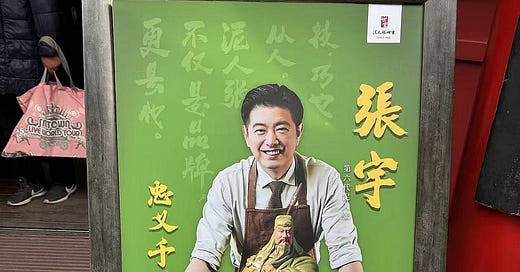



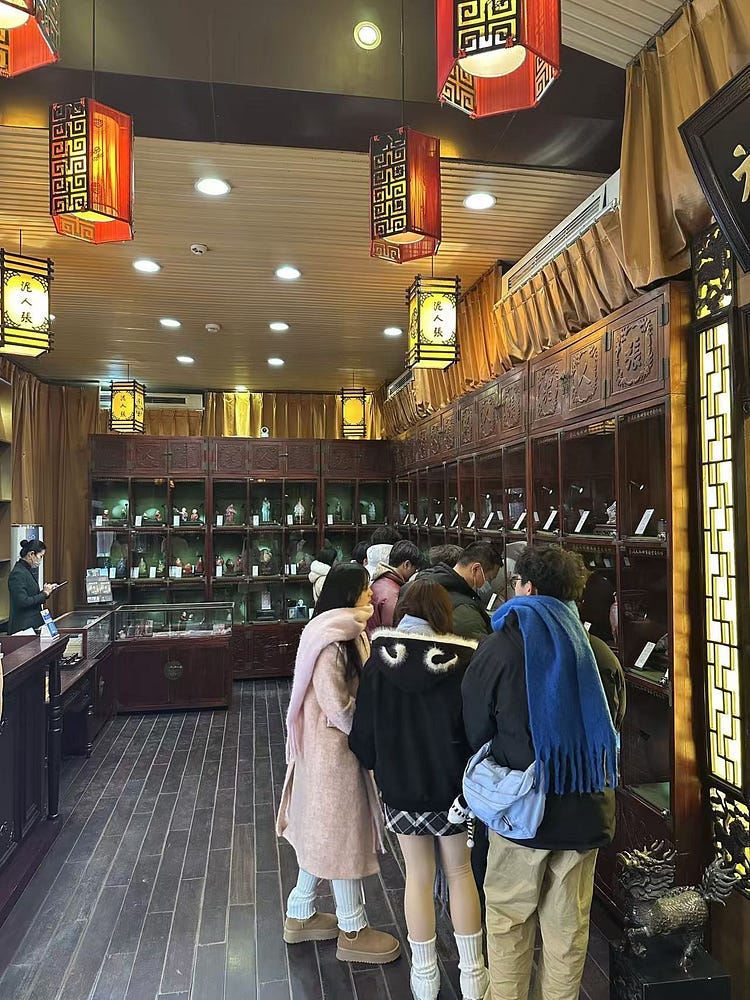
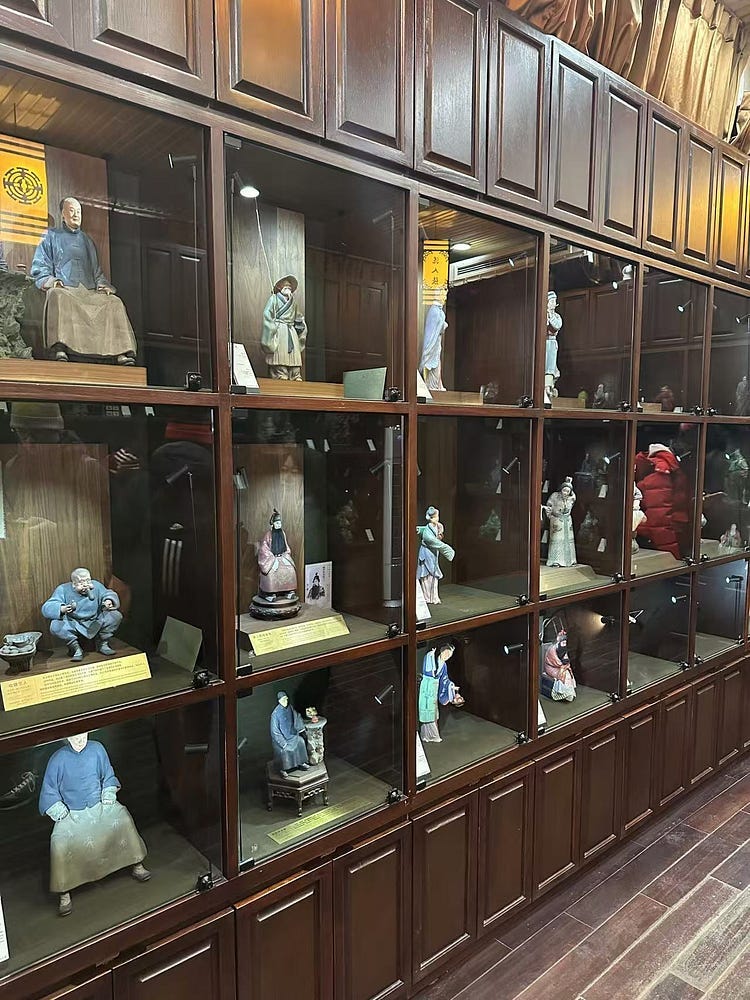
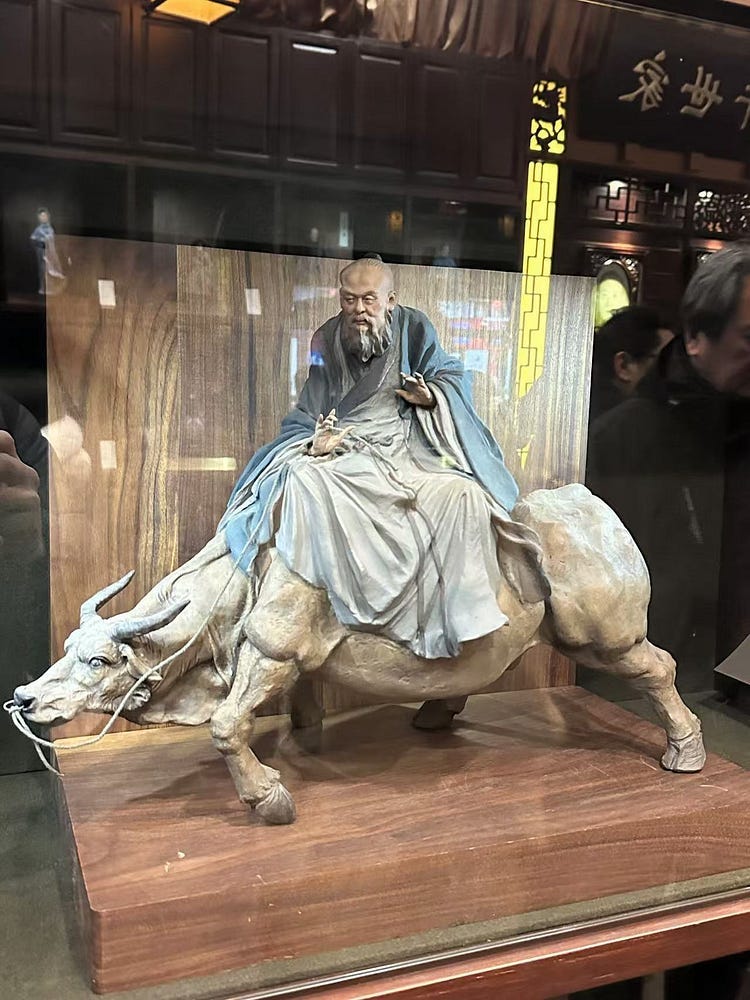
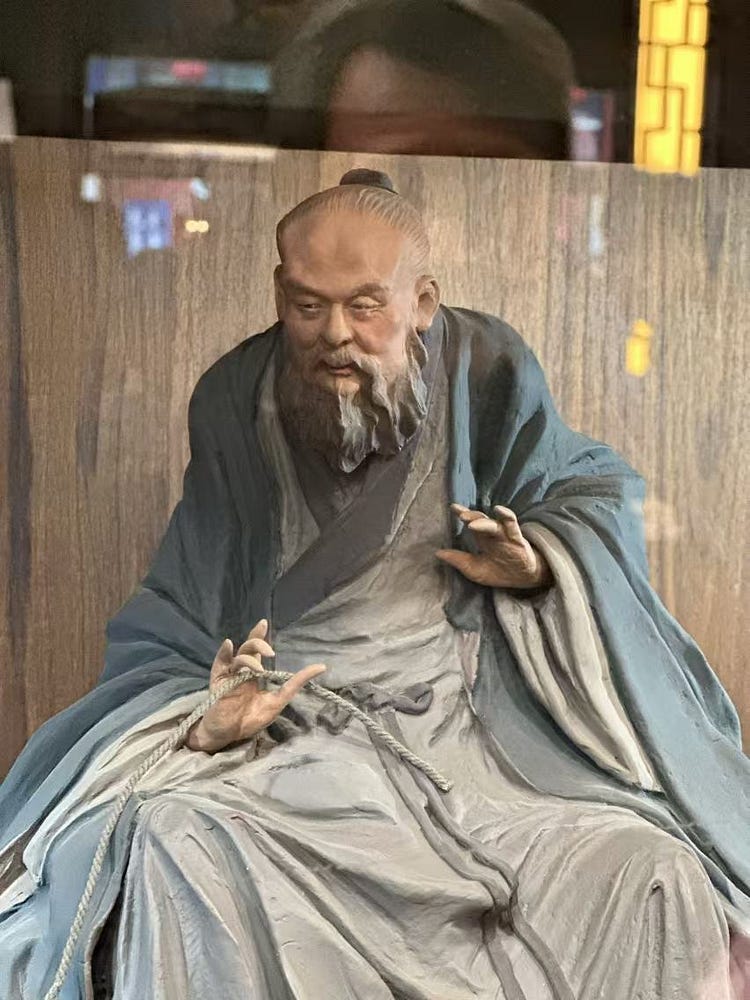

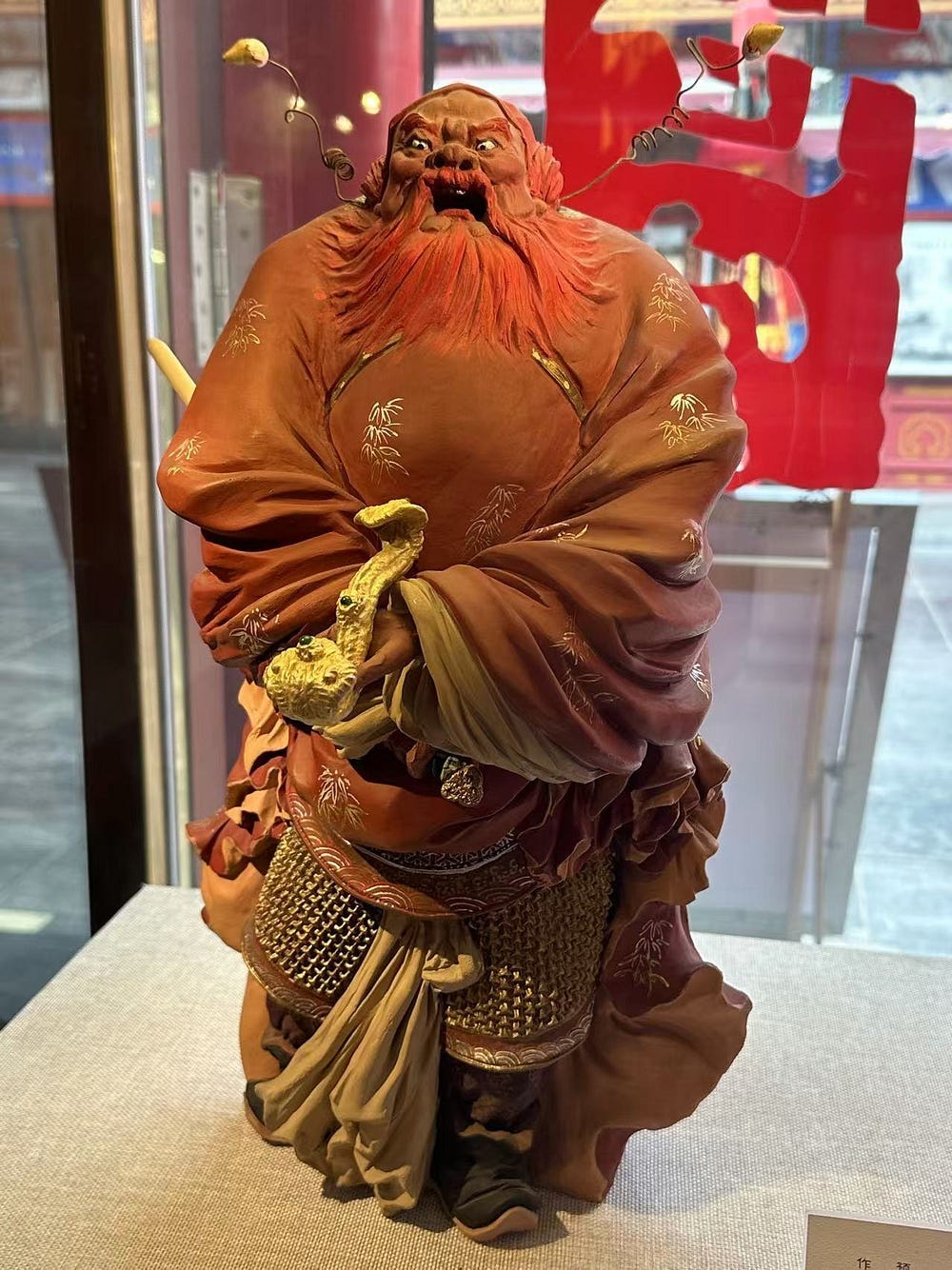

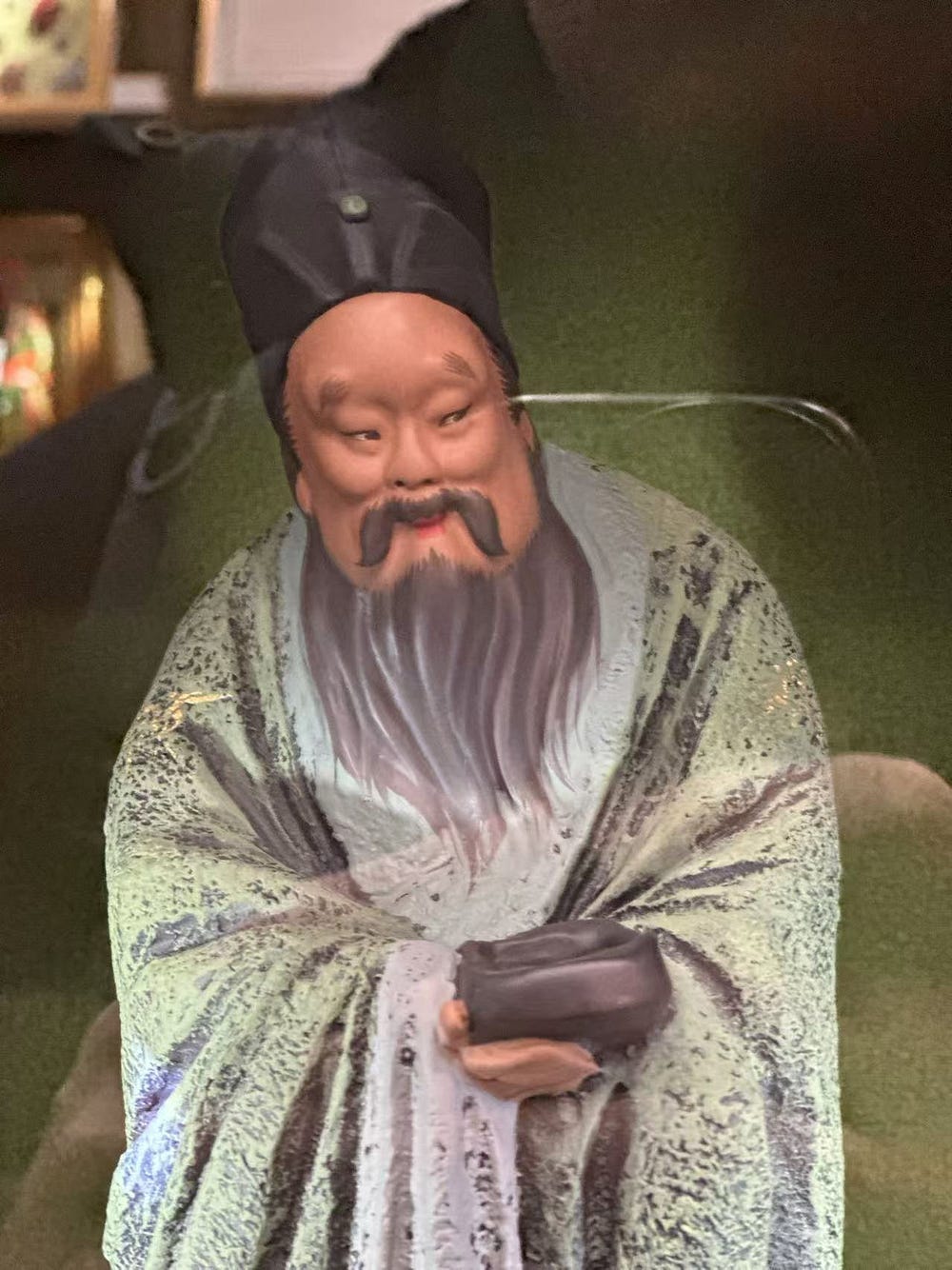
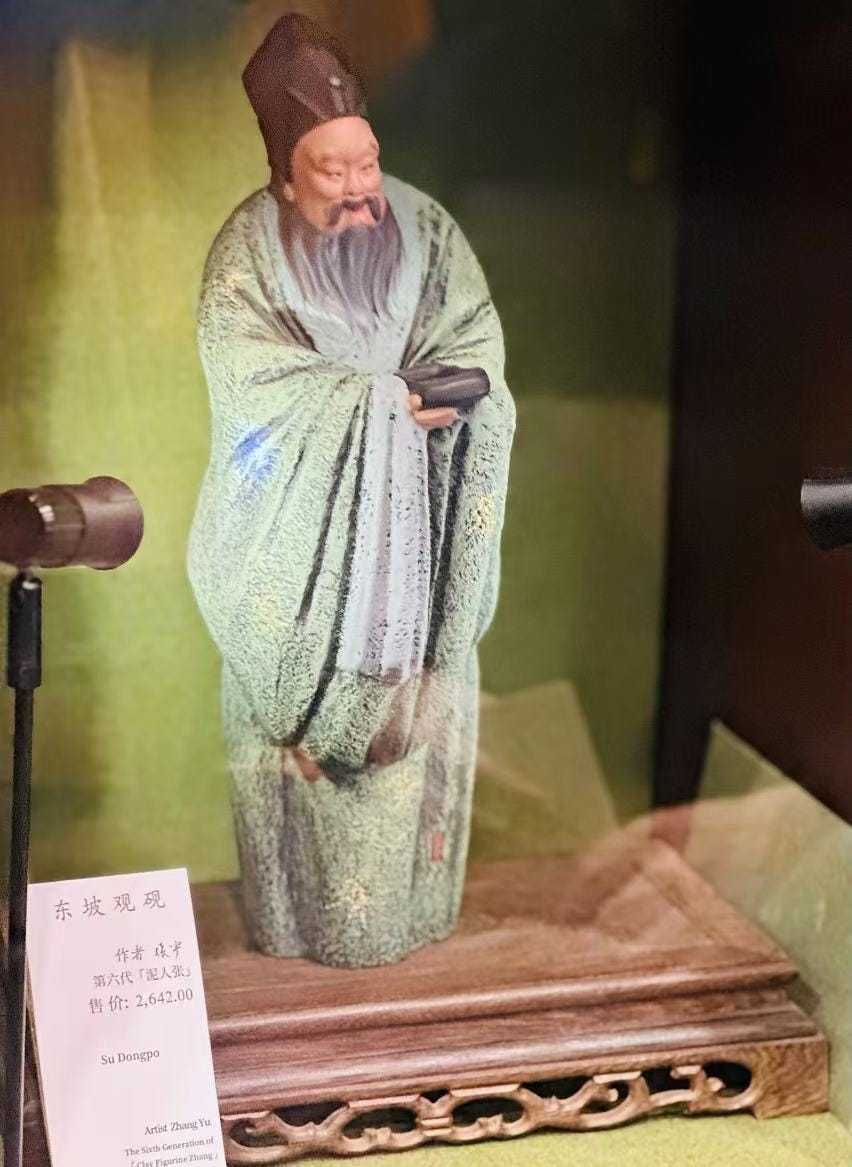
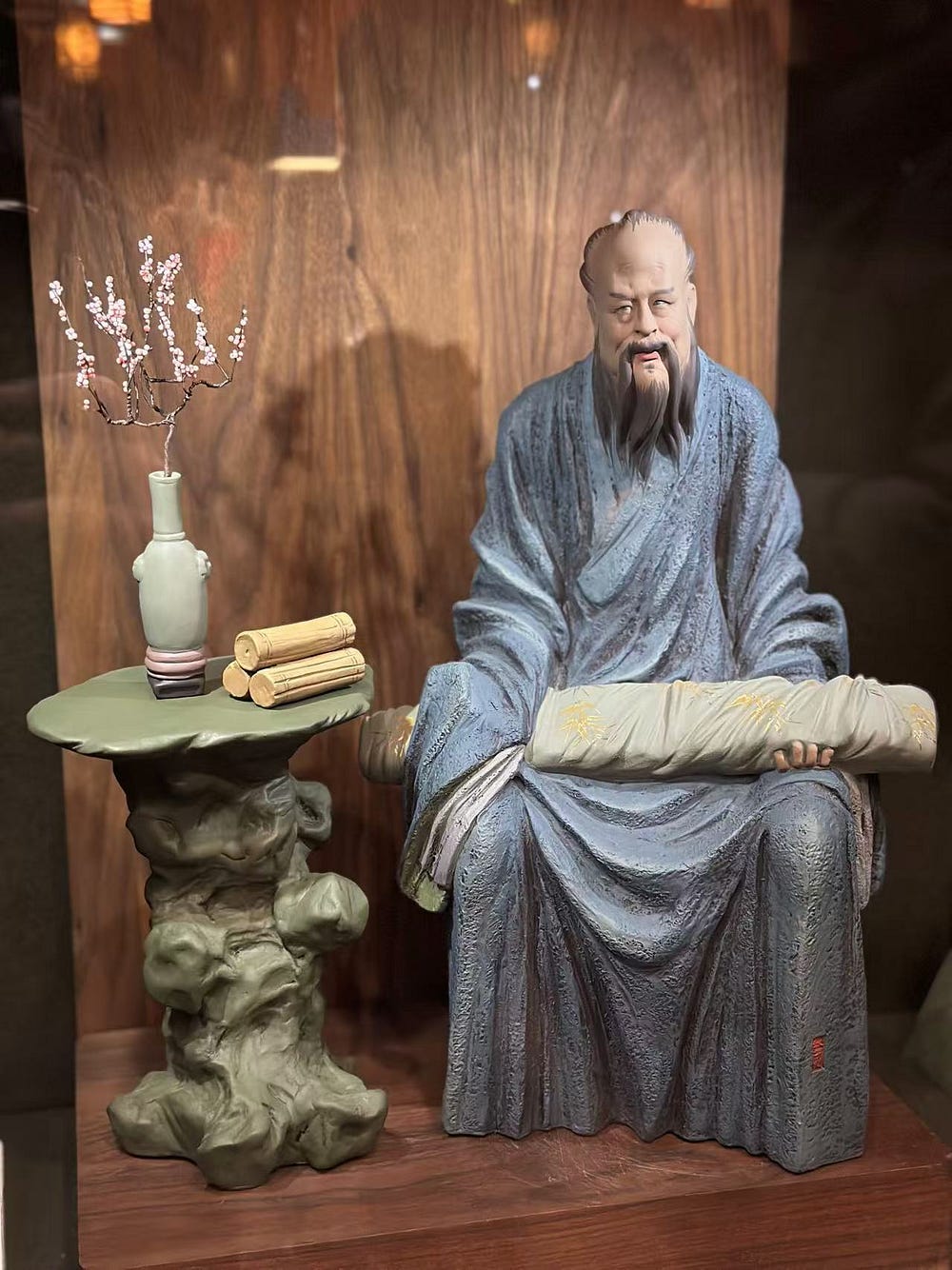




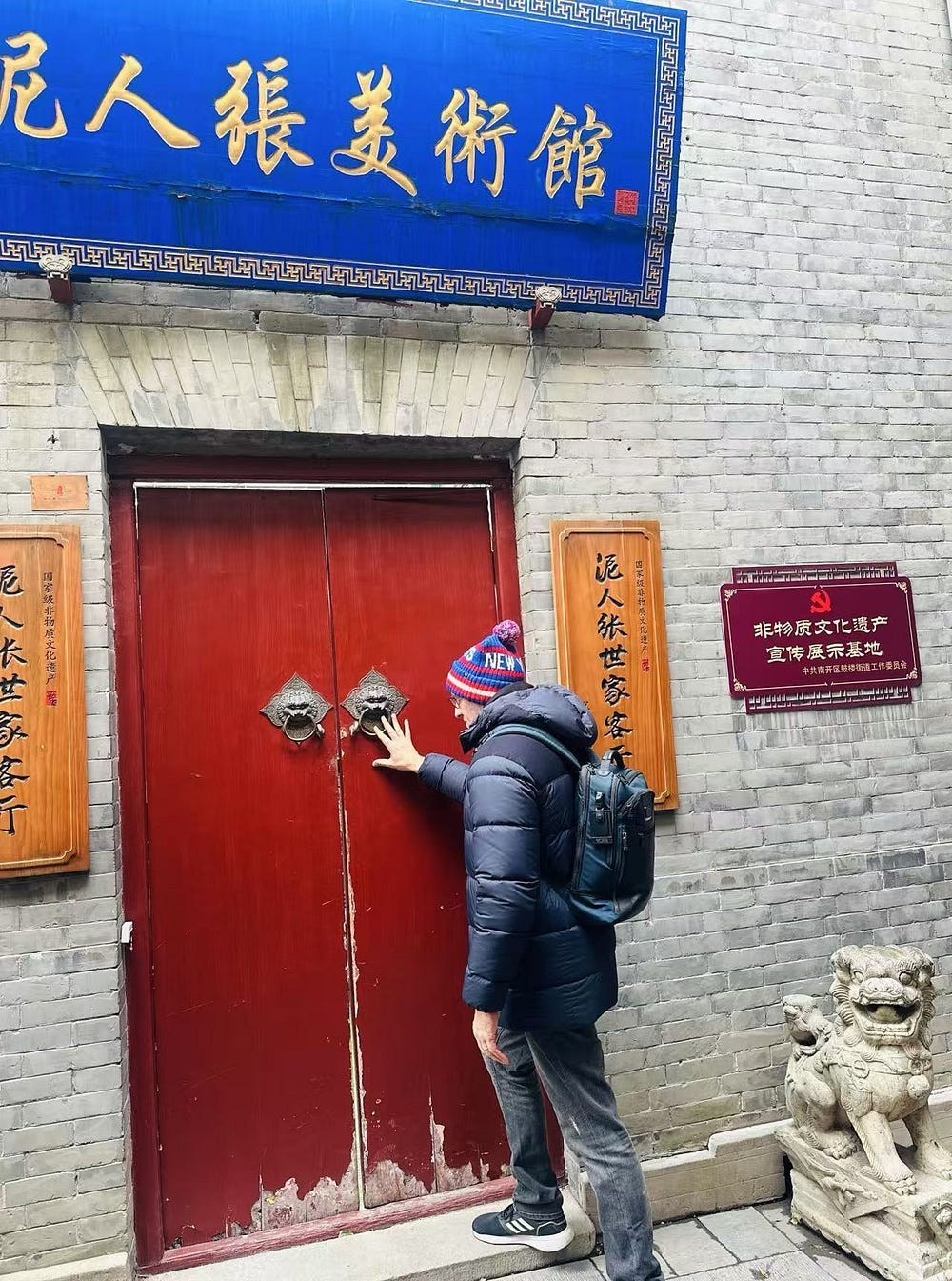
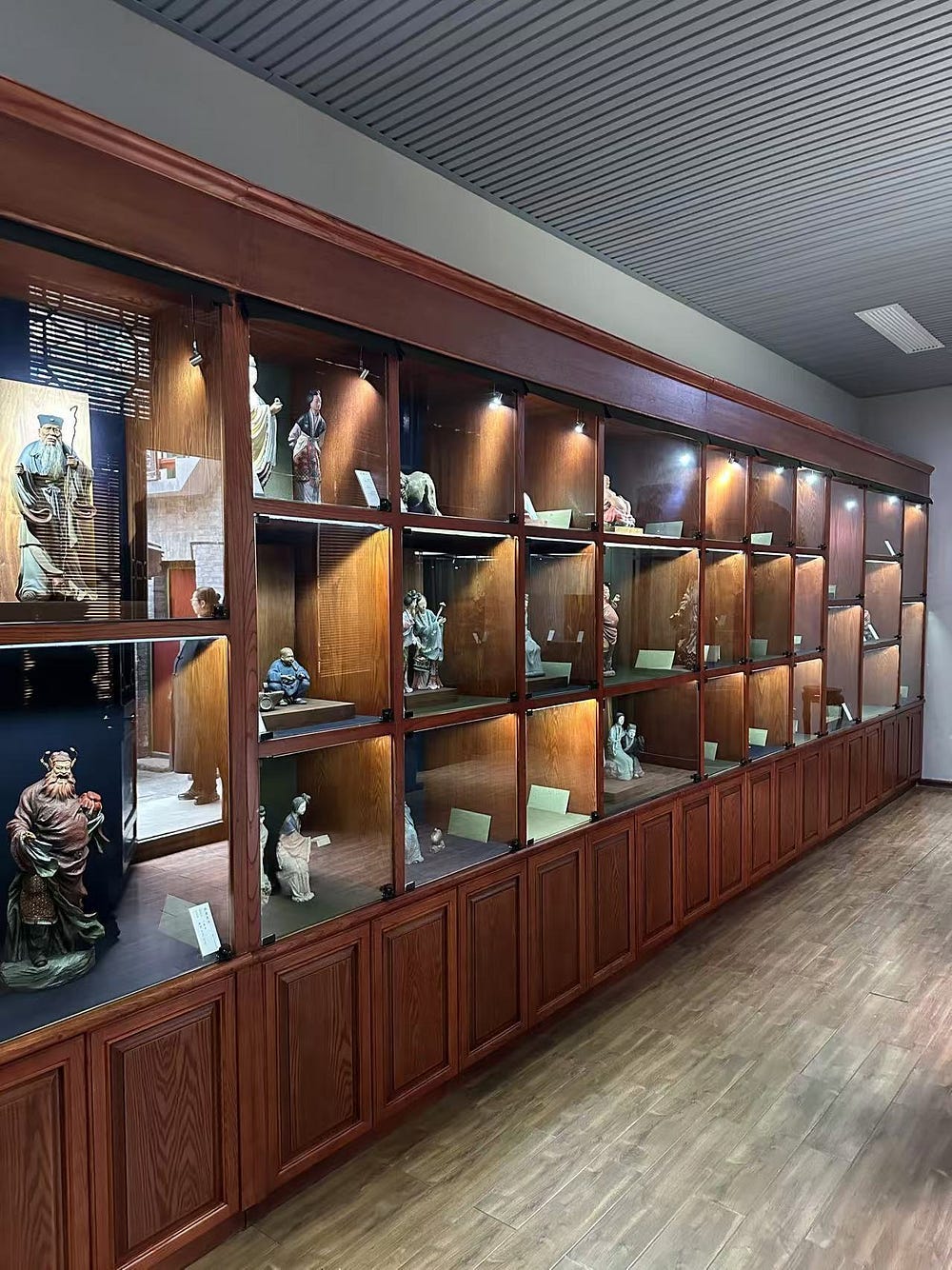
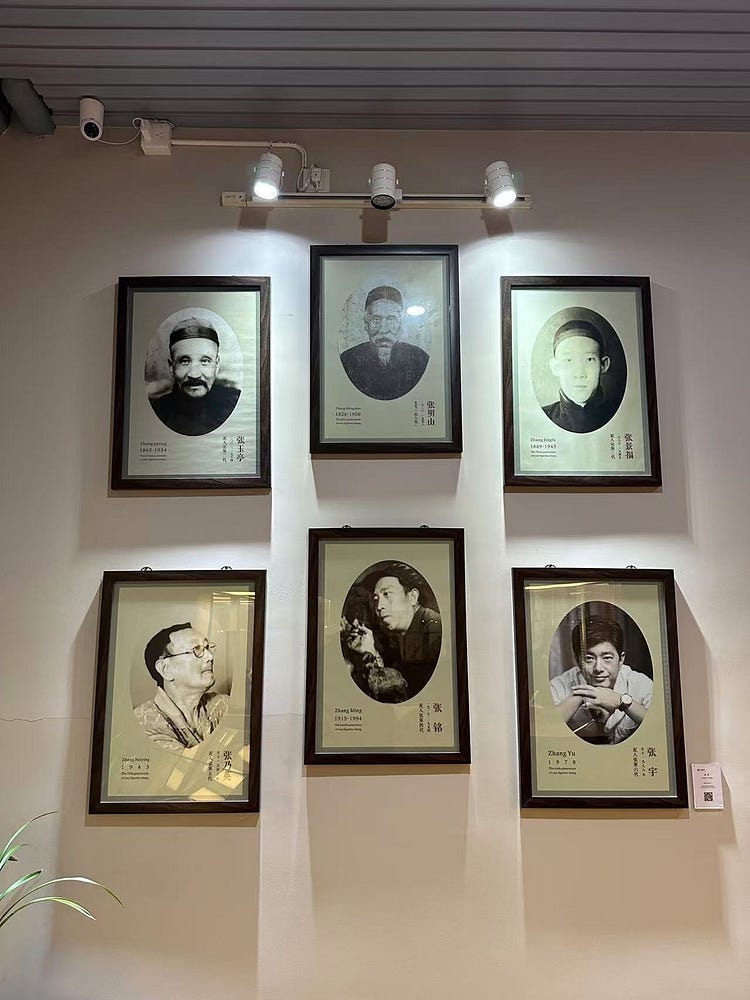



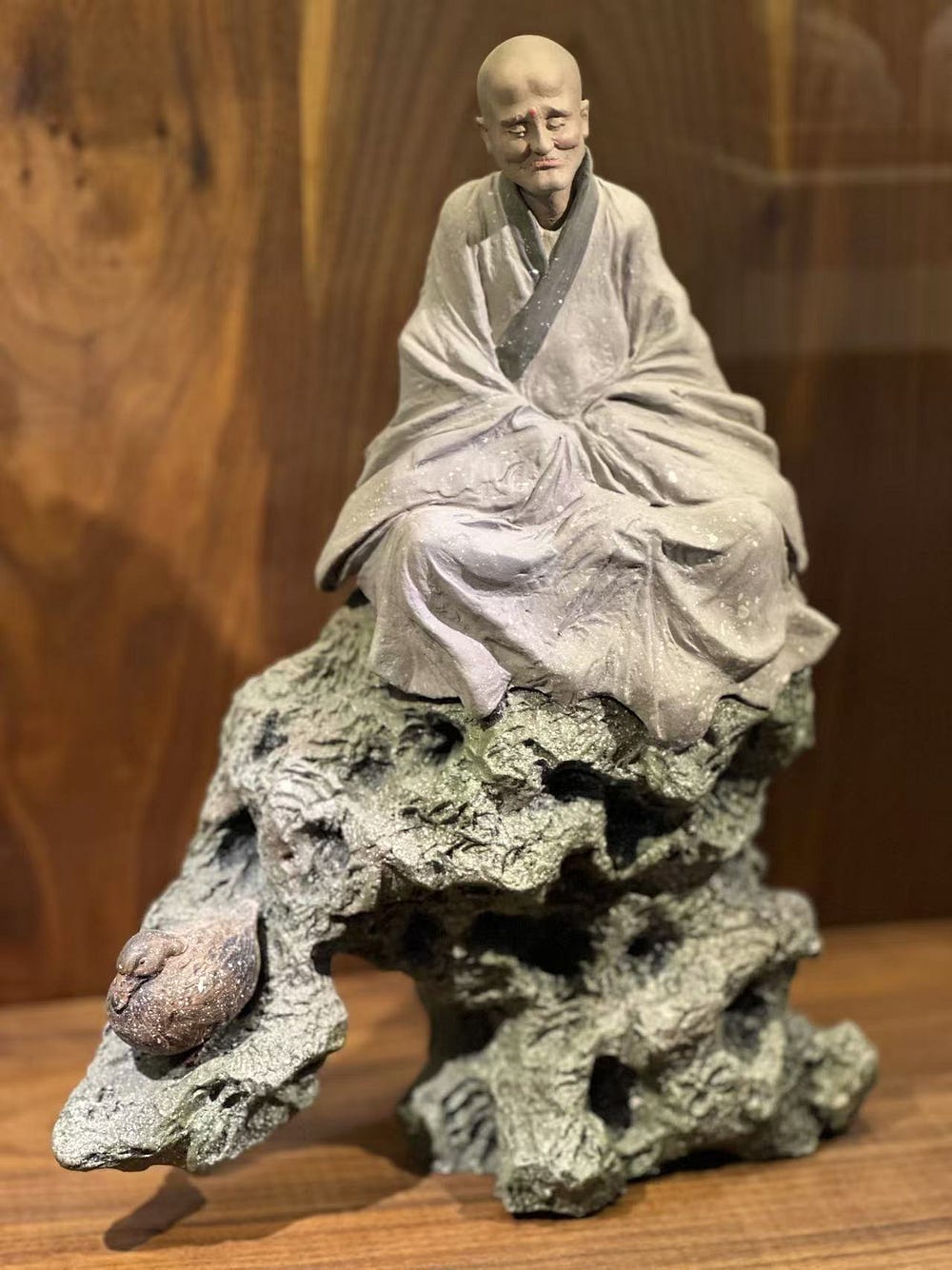
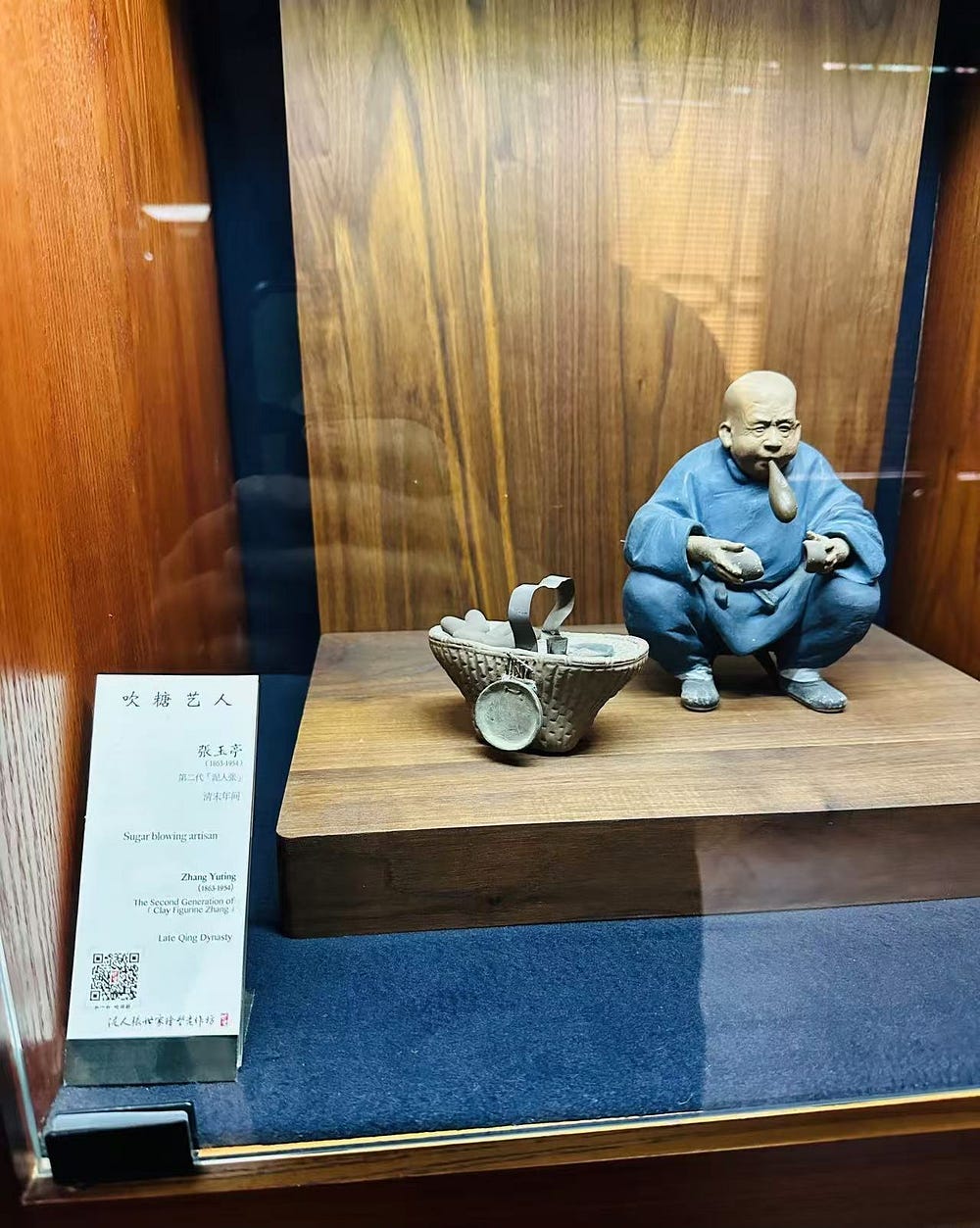
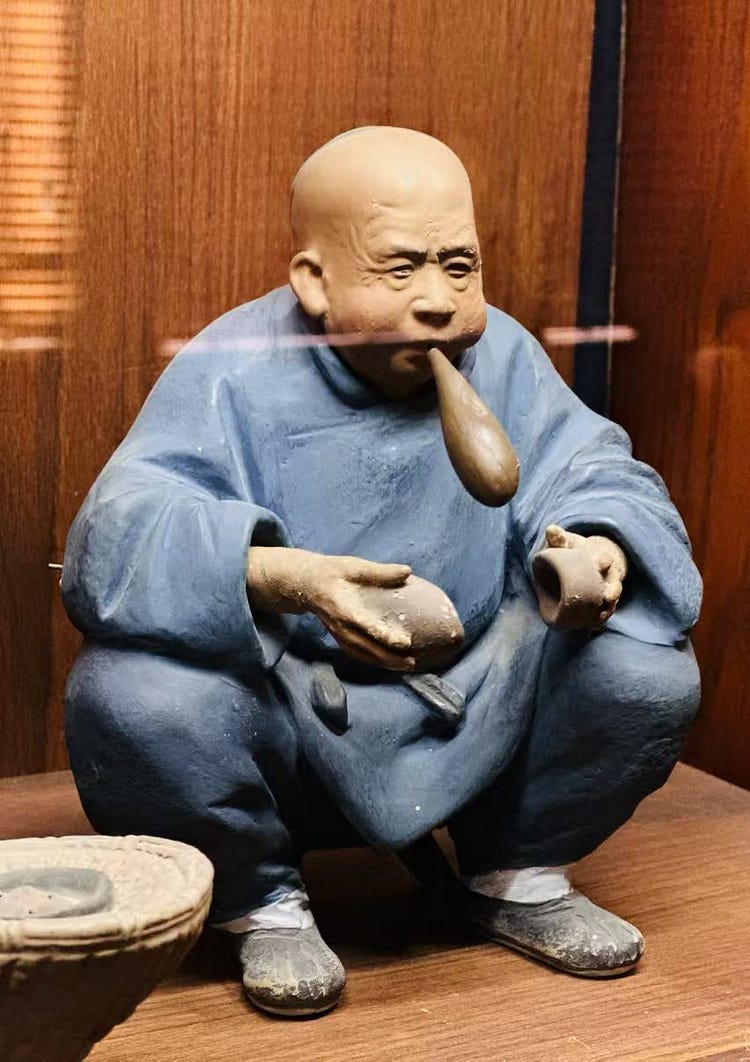


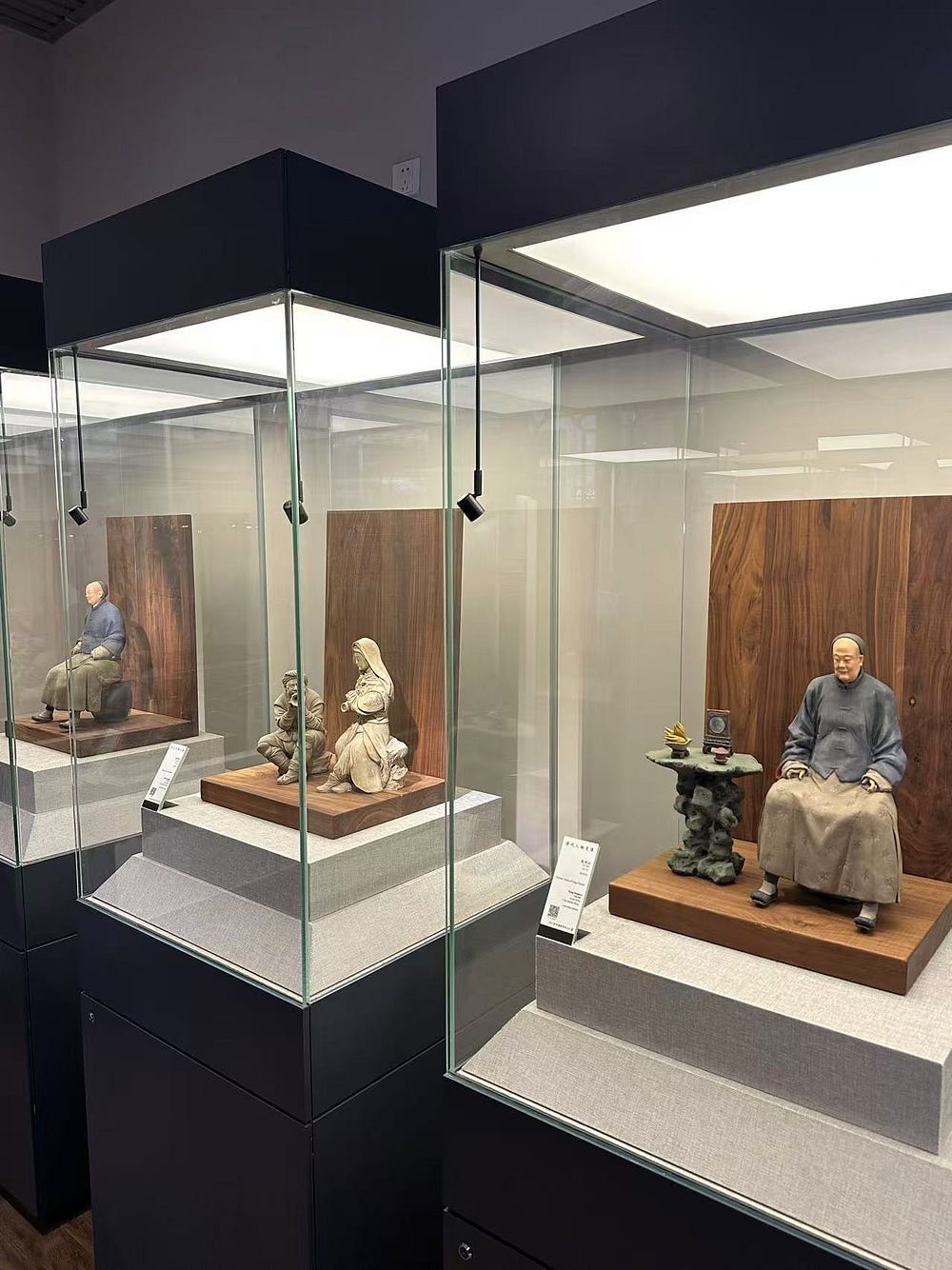
What a treasure trove of living history - the craftsmanship is truly awesome! Laozi on a bull is wonderful, but you got me with the Zhong Kui piece - as a fellow Yorkshireman, I can almost hear Brian Blessed's booming voice when I look at it.
What a gorgeous tribute to an amazing 'folk' tradition! I love how generational it is, with each generation following the family craft and putting their own individual mark on it. And the photos! Glorious! I hope you got one of the Su Shi's to have in your home, since he is your hero. I would happily read many more articles on Clay Zhang, Paul! I must say although I loved them when I was in Tianjin and bought a few, I probably didn't appreciate the depth of culture they had back then. More Clay Zhang!!!